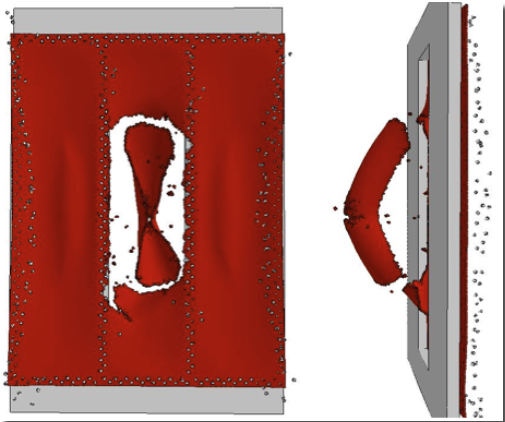Plate and Shell Structures
Modeling Structural Complexity
Complex steel plate structures commonly found in civil and mechanical construction can be modeled in great detail with MARS. Contact conditions between all entities in the model ensure that plates do not penetrate each other. Rivet, bolt, or weld elements are used to hold plates and braces together.

Laceration and 2D fragmentation

Reinforced concrete wall responses to blast
The structural response of reinforced concrete structures to blast loads and fragment impacts is a problem of great interest to the defense community. MARS features unique methods to treat rebar-concrete interaction. Rebars are modeled using strings of beam finite elements capable of bending and torque resistance. Rebars are independently generated and embedded in the concrete. Non-linear relationships govern the bond slip behavior to simulate rebar pull-out.

